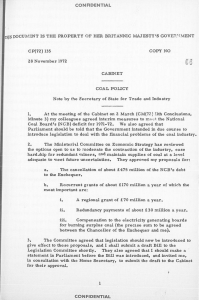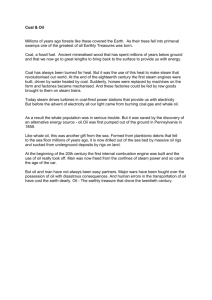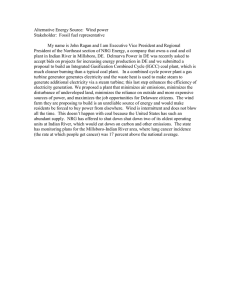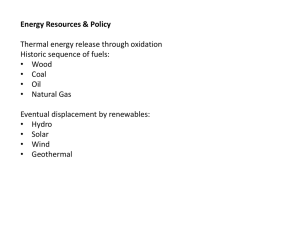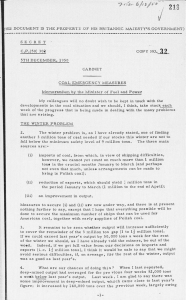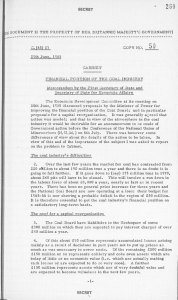Chapter 1 Energy Basics
advertisement
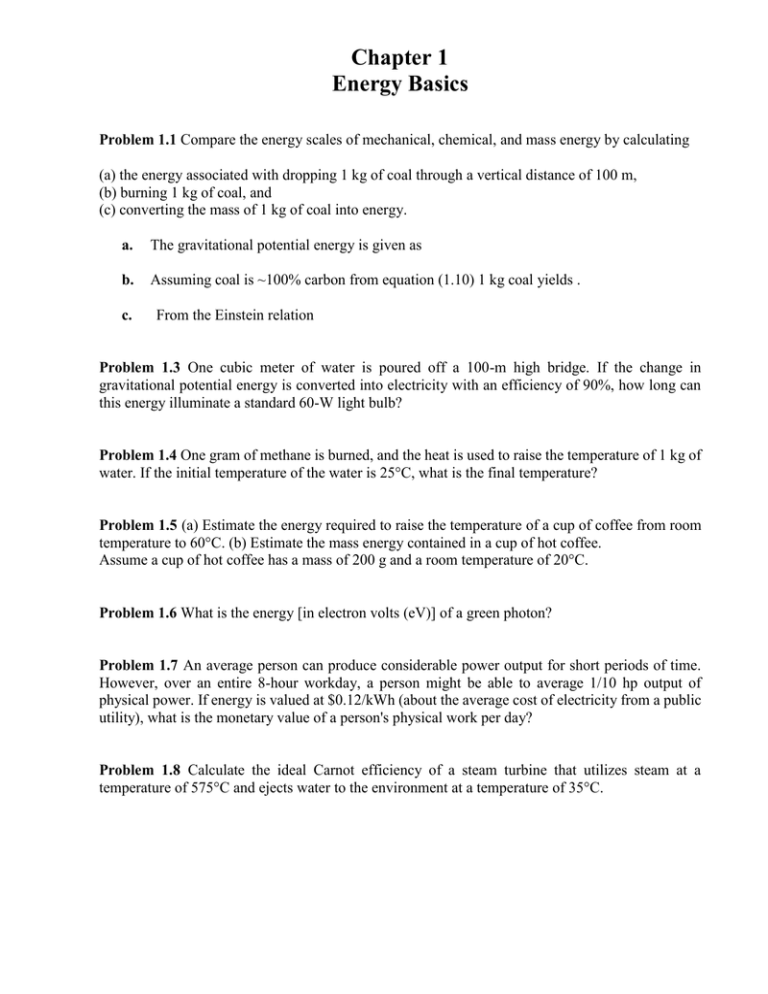
Chapter 1 Energy Basics Problem 1.1 Compare the energy scales of mechanical, chemical, and mass energy by calculating (a) the energy associated with dropping 1 kg of coal through a vertical distance of 100 m, (b) burning 1 kg of coal, and (c) converting the mass of 1 kg of coal into energy. a. The gravitational potential energy is given as b. Assuming coal is ~100% carbon from equation (1.10) 1 kg coal yields . c. From the Einstein relation Problem 1.3 One cubic meter of water is poured off a 100-m high bridge. If the change in gravitational potential energy is converted into electricity with an efficiency of 90%, how long can this energy illuminate a standard 60-W light bulb? Problem 1.4 One gram of methane is burned, and the heat is used to raise the temperature of 1 kg of water. If the initial temperature of the water is 25°C, what is the final temperature? Problem 1.5 (a) Estimate the energy required to raise the temperature of a cup of coffee from room temperature to 60°C. (b) Estimate the mass energy contained in a cup of hot coffee. Assume a cup of hot coffee has a mass of 200 g and a room temperature of 20°C. Problem 1.6 What is the energy [in electron volts (eV)] of a green photon? Problem 1.7 An average person can produce considerable power output for short periods of time. However, over an entire 8-hour workday, a person might be able to average 1/10 hp output of physical power. If energy is valued at $0.12/kWh (about the average cost of electricity from a public utility), what is the monetary value of a person's physical work per day? Problem 1.8 Calculate the ideal Carnot efficiency of a steam turbine that utilizes steam at a temperature of 575°C and ejects water to the environment at a temperature of 35°C.


